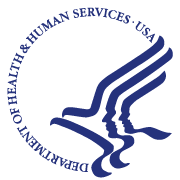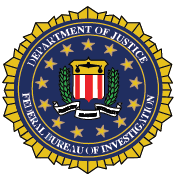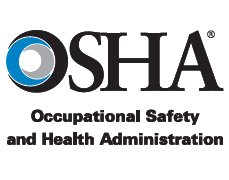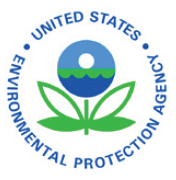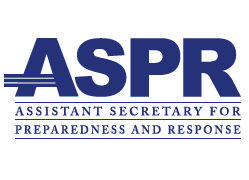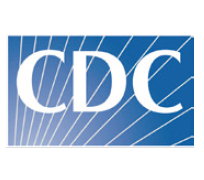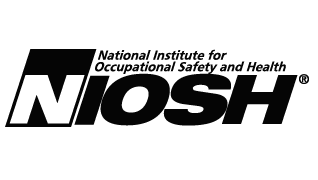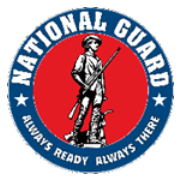Fourth Generation Agents: Hospital Medical Management Guidelines
(Information as of January 18, 2019)
Purpose/Background
Purpose
These guidelines were developed as part of ongoing preparedness for all hazards and are intended to support fire, EMS, and hospital staff in the medical management of patients if an incident occurs involving a fourth generation agent (FGA, also known as A-series or Novichok nerve agents), such as the one used in the United Kingdom (U.K.) in 2018. No illicit use or manufacture of an FGA or other nerve agent is known to have occurred in the United States (U.S.), and there is no known threat of any nerve agent use in the U.S.
The guidance is intended for fire and EMS first responders and hospital staff. As part of ongoing standard preparedness, jurisdictions should update their existing plans with this information and integrate it into in-service training curricula.
Limited experiential and research data specific to FGAs are available. These guidelines will be updated as additional insights are gained.
If you suspect a nerve agent poisoning incident, ensure emergency services are aware through 911 and the local FBI Weapons of Mass Destruction (WMD) Coordinator is notified immediately. Contact your regional poison center (1-800-222-1222) for additional patient management information.
If FGA presence is suspected or confirmed, the U.S. government can assemble a group of subject matter experts to provide medical advice to local authorities and providers upon request.
Background
Nerve agents are extremely toxic chemical warfare agents. They are generally categorized as either volatile or low volatility chemicals. A volatile chemical evaporates readily, forming a vapor; exposure would most likely occur from breathing in chemical vapor and symptoms would appear soon (often within seconds to minutes) after inhalation. Most exposures to low volatility agents are from dermal contact. Signs and symptoms may be delayed for hours to even days (latent period). However, under certain circumstances, low volatility agents may be inhaled, in which case symptoms would rapidly ensue. Sarin is an example of a volatile nerve agent, whereas VX is a low volatility agent. Ingestion, eye exposure, and contact with mucous membranes are additional possible routes of exposure for both volatile and low volatility nerve agents.
Fourth generation agents are low volatility nerve agents that evaporate even less readily than VX. FGAs are at least as potent as VX; it takes a lower, or a similar, dose of an FGA compared to VX to cause adverse health effects or death. All nerve agents inhibit acetylcholinesterase (AChE), an enzyme that normally breaks down the neurotransmitter acetylcholine (ACh). The inhibition of AChE results in an excess of ACh at muscarinic and nicotinic receptors in the brain, in skeletal and smooth muscle, and in exocrine glands (e.g., tear, salivary, bronchial, and sweat glands). This results in hyperactivity in these target organs, a condition called cholinergic crisis. Organophosphorus and carbamate pesticides also inhibit AChE and produce similar effects to nerve agents.
Medical providers need to keep in mind that those variables (e.g., the specific agent and dose, including concentration and duration of exposure; physical states of the agent in the environment; routes of exposure; time from exposure to treatment; and underlying medical conditions) determine toxicity, clinical manifestations, and effectiveness of medical interventions. Therefore, a spectrum of clinical effects among the nerve agents and among individual patients is expected.
What You Should Know About all Nerve Agents
- Nerve agents are extremely toxic and can cause rapid loss of consciousness, convulsions, and death from respiratory failure.
- Nerve agents are readily absorbed by inhalation, ingestion, and dermal contact. Rapidly fatal systemic effects may occur.
- The time course of health effects depends on the agent, route of exposure, and other factors, with inhalation causing the most rapid effects and dermal contact associated with a longer (hours to days) latent period.
- Patients whose skin, clothing, or personal effects are contaminated with nerve agent can expose rescuers by direct contact or through evaporation of vapor (“off-gassing”). Patients whose skin is exposed only to nerve agent vapor pose minimal risk of secondary exposure; however, clothing can trap vapor.
- Along with supportive care and patient decontamination, anticholinergics (e.g., atropine), oxime AChE reactivators (e.g., pralidoxime chloride (2-PAM)), and anticonvulsants (e.g., the benzodiazepines - diazepam, midazolam, and lorazepam) are the mainstays of the management of nerve agent toxicity.
Managing Nerve Agent Exposure
ABCDDs: Airway, Breathing, Circulation (supportive care), Decontamination, and Drugs (anticholinergics, reactivators, and anticonvulsants)
Additional Considerations
- The Secretary of Health and Human Services issued a declaration, effective April 11, 2017, under the Public Readiness and Emergency Preparedness Act (PREP Act) to provide liability immunity to certain individuals and entities against claim of loss relating to the use of medical countermeasures against nerve agents, given certain conditions are met: https://www.federalregister.gov/documents/2017/05/10/2017-09455/nerve-agents-and-certain-insecticidesorganophosphorous-andor-carbamate-countermeasures
- If standard resources become exhausted, see Contingency Medical Countermeasures for Treating Nerve Agent Poisoning (https://asprtracie.hhs.gov/technical-resources/resource/6004/contingency-medical-countermeasures-for-treating-nerve-agent-poisoning). The decision to use these contingency measures is at the discretion of the treating provider.
Agent Identification
Patients may demonstrate some combination of SLUDGE and DUMBBELS.
SLUDGE – Salivation, Lacrimation, Urination, Defecation, Gastrointestinal upset, Emesis
DUMBBELS – Defecation, Urination, Miosis/Muscle weakness, Bronchospasm/Bronchorrhea, Bradycardia, Emesis, Lacrimation, Salivation/Sweating
Note that:
- The above are mostly muscarinic effects, with the exception of musculoskeletal effects, which are mediated by nicotinic receptors; there may be other nicotinic effects.
Nicotinic effects include MTWHF:
Monday Mydriasis
Tuesday Tachycardia
Wednesday Weakness
THursday Hypertension
Friday Fasciculations
- Patients may have some but not all of these signs and symptoms. In some cases, miosis (pinpoint pupils) and bronchospasm (severe bronchoconstriction) may not be prominent or may even be absent.
Exposures to nerve agents, including FGAs, may be difficult to distinguish clinically from overdoses of opioids or other street drugs. Polysubstance mixtures and novel preparations of illicit drugs have become increasingly frequent in street drug intoxications. Some can present with unusual physiological profiles and signs and symptoms that could be confused with those of chemical warfare agents.
Rescuer Protection
FGAs present a significant risk of secondary exposure if responders come into contact with agent on patients, their clothing, personal effects, or contaminated surfaces. Just as importantly, patient decontamination is a medical intervention because FGAs can deposit on and in skin and absorption can continue until the patient is fully decontaminated. As long as FGAs are on or in the skin, they pose a medical risk to the exposed individual even if that individual does not yet look or feel sick.
Personal Protective Equipment
Painstaking attention to protective zones, decontamination protocols, and donning and doffing of personal protective equipment (PPE) is essential to prevent secondary exposure and spread of agent in the environment.
Employers must comply with Occupational Safety and Health Administration (OSHA) standards on PPE (29 CFR 1910.132): https://www.osha.gov/laws-regs/regulations/standardnumber/1910/1910.132, Respiratory Protection (29 CFR 1910.134): https://www.osha.gov/laws-regs/regulations/standardnumber/1910/1910.134, Hazardous Waste Operations and Emergency Response (29 CFR 1910.120): https://www.osha.gov/laws-regs/regulations/standardnumber/1910/1910.120, and other requirements, including state regulations, whenever such requirements apply.
The Occupational Safety and Health Administration (OSHA) provides general guidance for EMS and hospitals that receive and treat victims of hazardous substance releases in the following documents:
- Best Practices for Protecting EMS Responders during Treatment and Transport of Victims of Hazardous Substance Releases and
- Best Practices for Hospital-Based First Receivers of Victims from Mass Casualty Incidents Involving the Release of Hazardous Substances.
Key Safe Work Practices include:
- Ensure that personnel take sufficient time to don and doff PPE carefully and correctly without distraction.
- Avoid using hand sanitizer or other products containing alcohol, as they may enhance absorption of agent and spread it over a larger area of skin. Do not use bleach to decontaminate skin.
- Establish an exposure management plan that addresses decontamination and monitoring of personnel in the case of any exposure. Training and follow-up should be part of the personnel training.
- At the hospital, minimize the number of personnel entering the patient’s room and take precautions to avoid cross-contamination.
Managing Patients Before They are Decontaminated:
Responders and hospital personnel providing or assisting with patient care before and during decontamination should select PPE based on the employer’s standard operating procedures, the job task, and the potential for exposure to hazards. The PPE section of the FGA Reference Guide (https://chemm.hhs.gov/nerveagents/FGAReferenceGuide.htm) outlines recommendations for PPE selection.
Managing Patients After They are Decontaminated:
Limited data are available on the risk of post-decontamination handling of patients who have been exposed to FGAs, but there are concerns that FGAs can persist in body fluids, posing a potential hazard to personnel. Due to a depot effect in the skin, repeated decontamination over a course of days may be beneficial. For these reasons, the following specific PPE recommendations provide a precautionary approach to worker protection measures. This guidance will be updated as more evidence becomes available.
Because of the concerns that FGAs can persist in body fluids, the following guidance provides a precautionary approach to protect EMS and hospital personnel from exposure when treating a patient, following decontamination, who was suspected or confirmed to have been exposed to FGAs:
- Two pairs of single-use (disposable) nitrile examination gloves with extended cuffs. Outer gloves should be a minimum of 7 mil thickness at the palm and inner gloves should be a minimum of 5 mil thickness at the palm. Gloves should be changed every 15 minutes or when they become soiled.
or
One pair of single-use (disposable) 15 mil nitrile or 14 mil butyl rubber gloves. Gloves should be changed every 2 hours or when soiled.
- Single-use (disposable) surgical or isolation gown; a single-use (disposable) apron that covers the torso to the level of the mid-calf; and single-use (disposable) sleeves. Gown should pass ANSI/AAMI PB70 Level 3 or 4 requirements and apron and sleeves should be constructed of fabric that provides protection against VX (such as TyChem® F, Microchem® 4000, or Zytron® 300 fabric).
or
Single-use (disposable) coverall. Coverall should be constructed of fabric and seams that provides protection against VX (such as TyChem® F, Microchem® 4000, Zytron® 300 fabric with taped seams).
- Single-use (disposable) full-face shield.
When it is not possible to implement the precautionary approach above, EMS and hospital personnel at a minimum should wear appropriate PPE and take blood and body fluid precautions, including:
- Two pairs of nitrile medical exam gloves,
- Gown,
- Eye or face protection, and
- Take all measures to prevent direct contact with secretions and body fluids as they may contain chemical agent.
It should be recognized that this level of PPE may not provide sufficient exposure reduction. Therefore, gloves should be changed every 15 minutes, or when they become soiled, or between patients if possible, whichever occurs soonest, and gowns should be changed when they become soiled. Limited real world experience in the U.K. demonstrated this approach was adequate to protect workers given the specifics associated with the March and June 2018 incidents.
Responders and hospital personnel should report any potential exposure and be medically evaluated immediately per your department or agency’s procedures. Symptoms may occur up to 3 days post exposure.
In order to determine when it is appropriate to downgrade PPE, employers are encouraged to perform a risk and hazard assessment, taking into account patient status. See the FGA Reference Guide (https://chemm.hhs.gov/nerveagents/FGAReferenceGuide.htm) for information necessary to conduct the risk and hazard assessment.
General recommendations for handling PPE include:
- PPE should be inspected prior to donning for any defects and those that are punctured, torn, or otherwise damaged should be discarded and replaced.
- PPE should be taken off in a dedicated area when exiting the patient room to prevent cross-contamination.
PPE, linens, and other waste that have come into contact with the patient should be segregated from other waste and disposed of properly. Consult with experts for disposal recommendations.
Protect Yourself
To Protect Yourself from Exposure
- FGAs are highly potent; contacting small amounts can cause serious health effects.
- Avoid any unprotected contact with agent, suspected contaminated surfaces, or potentially contaminated people.
- Avoid any potential for cross-contamination. Painstaking attention to protective zones, decontamination protocols, and donning and doffing of personal protective equipment (PPE) is essential to prevent secondary exposure and spread of agent in the environment.
- Report any potential exposure per your employer’s procedures. Symptoms may occur up to 3 days post exposure.
- Handle blood and body fluids with extra caution, as though they are contaminated with FGA. Limited data are available on the risk, but there are concerns that FGAs can persist in body fluids, posing a potential hazard to personnel.
- PPE should be selected based on the employer’s standard operating procedures, the job task, and the potential for exposure to hazards. For specific PPE recommendations, see below.
Decontamination
Patient Decontamination
After FGA exposures, decontaminating patients’ skin and hair is essential. Decontamination is a medical intervention and should be performed as soon as possible to prevent absorption of agent. However, even after a delay of hours or days, decontamination may still reduce harm to the patient and the risk of secondary exposure to other people.
- Removal of clothing and personal effects is a vital step to reduce ongoing and secondary exposure and can remove significant amounts of chemical contamination. Pay particular attention to how clothing is removed in order to minimize the spread of contamination.
- Containment of suspected or confirmed contaminated clothing in tightly closed plastic bags, double layered in 6 mil polypropylene bags if possible, is critical. Patient clothing and personal effects should be secured for law enforcement purposes.
- Blotting skin with a paper towel, dry wipe, or other dry cloth will also contribute to effective decontamination. PRISM guidance recommends 10 seconds of blotting followed by 10 seconds of rubbing the contaminated area of skin. This dry decontamination step can be performed by patients themselves and, along with clothing removal, should be done as early as possible. Disrobing and blotting skin with a paper towel, dry wipe, or other dry cloth can remove significant amounts of chemical contamination.
- If RSDL is available, it is recommended for spot decontamination.
- Water should be utilized per established decontamination protocols after disrobing, ideally with a high-volume, low-pressure shower, including soap if available, gentle rubbing with a soft cloth or sponge, and active drying with a clean towel after the shower. Do not delay decontamination awaiting specialized products such as soap or RSDL.
- Avoid using hand sanitizer or other products containing alcohol, as they may enhance absorption of FGAs.
- Do not use bleach to decontaminate skin.
- FGAs are not readily degraded by water; thus, avoid direct contact with runoff.
- The EPA issued a statement in 2000 generally allowing responders to prioritize actions to save human lives and protect health. After imminent threats are addressed, responders should immediately take all reasonable steps to contain contamination (including decontamination runoff) and mitigate environmental consequences.
- Due to a depot effect, patients’ skin may need repeated decontamination over a course of days. Ideally this process would be guided by input from U.S. government subject matter experts and resources.
Waste Management
Used PPE, body fluids, and waste generated in the management of patients should be handled with extra caution and segregated from other waste, as they may be contaminated with chemical agent.
Once lifesaving efforts are under control, the incident command should develop a comprehensive waste management plan along with a site-specific health and safety plan. The incident-specific comprehensive waste management plan should address the following:
- Consideration must be given early on, in an exposure or suspected exposure event, of the need to preserve certain materials and samples as required for investigation and chain of custody purposes. Consultation with the local FBI WMD Coordinator or other law enforcement may be necessary to ensure proper materials (and quantities) are preserved.
- Materials and samples needed for investigation and chain of custody should be secured and isolated from the waste collection activities. Once designated as “evidence” the materials are no longer treated as “waste.”
- FGAs can persist for extremely long periods of time on materials and effluent liquids such as water (e.g., from patient and responder decontamination processes). Personnel handling these materials and liquids must be made aware of the potential hazard they present and provided with appropriate PPE.
- The plan must identify specific collection and decontamination methods and personnel. Personnel must be knowledgeable of the FGA hazards, effective decontamination methods, and have appropriate PPE.
- Waste must be decontaminated before it is handled by the facility’s regular waste management staff.
- Incineration may be identified in the Comprehensive Waste Management Plan as the best decontamination method for some of the contaminated materials. Local permit modifications and requirements may vary per state regulation.
- Consult with experts for disposal recommendations.
Clinical Signs and Symptoms
Typical Signs and Symptoms (Cholinergic Toxidrome) of Nerve Agent Poisoning
The presentation and timing of symptom onset depends on the agent, dose, and route of exposure. Potential signs and symptoms may include:
Mouth/Skin: drooling (salivation), foaming at the mouth, excessive sweating
Nose/Eyes: runny nose, watery eyes (lacrimation) with small (often pinpoint) pupils (miosis)
Chest: cough, bronchospasm (severe bronchoconstriction), bronchorrhea (excessive bronchial secretions), labored breathing, wheezing, respiratory failure
Genitourinary: excessive urination
Abdominal: diarrhea, abdominal (gastrointestinal) cramps, nausea, belching, vomiting (emesis)
Heart Rate: bradycardia
Mental Status: confusion, drowsiness
Musculoskeletal: twitching, fasciculations, cramps, fatigue, weakness
Neurological: tremors, slurred speech, ataxia, absent reflexes, seizures/convulsions, unconsciousness, coma
Specimen Collection for Laboratory Tests
Nerve agent toxicity results in depression of serum and erythrocyte cholinesterase. However, neither emergent assays for FGAs nor routine laboratory testing to detect organophosphorus compounds are widely available. Collect blood and urine samples per Centers for Disease Control and Prevention instructions:
- https://emergency.cdc.gov/labissues/pdf/Flowchart_ChemEvent_Specimen_collection.pdf
- https://emergency.cdc.gov/labissues/specimens_shipping_instructions.asp
Contact your state public health laboratory for additional guidance for testing by the Laboratory Response Network for Chemical Threats (LRN-C).
Differential Diagnosis
Key Clinical Distinguishing Features of FGAs versus other Nerve Agents
- FGAs are low volatility nerve agents, like VX, and therefore most likely to be encountered as a liquid.
- In general, the latent period between dermal exposure and symptom onset may be longer for FGAs than for VX and can be up to 3 days. Inhalational, ingestion, or large dermal exposures will have shorter latent periods.
- FGAs are persistent; if not decontaminated, they can remain on environmental surfaces for days or even many months. Physical surfaces must be decontaminated to prevent additional exposures.
- Decontamination of skin and hair is crucial and may provide clinical benefit even when performed hours to days after exposure to liquid agent, although the earlier the decontamination, the better.
- Bronchoconstriction has been a prominent feature of FGA toxicity in animal studies but has not been observed in the very limited number of human cases. If it occurs, bronchoconstriction may be difficult to manage clinically.
- Seizure activity has been a prominent feature of FGA toxicity in animal studies but has not been observed in the very limited number of human cases.
- FGAs may cause severe metabolic acidosis with markedly elevated serum lactate.
- Patients poisoned by FGAs may need medication and intensive supportive care over an extended duration. Multiple casualties may strain local resources at the point of care.
Treatment
Meticulous attention to supportive and symptomatic care is the key to initial patient management. FGA exposures may be resistant to initial and typically recommended treatment doses, requiring significantly higher doses and a longer duration of repeated dosing than other nerve agent exposures.
- Along with supportive care and decontamination, anticholinergics (e.g., atropine), oxime AChE reactivators (e.g., 2-PAM), and anticonvulsants (e.g., the benzodiazepines - diazepam, midazolam, and lorazepam) are the mainstays of the management of nerve agent toxicity. A simple way to remember this paradigm is the ABCDDs: Airway, Breathing, Circulation (ABC - supportive care), Decontamination, and Drugs (anticholinergics, reactivators, and anticonvulsants).
- Supportive care (the ABCs) ensures preservation of vital functions before and during decontamination and administration of medications. Airway and ventilator management may be required depending on the severity of symptoms.
- Decontamination (D) is a medical intervention designed to minimize the conversion of an external dose (on the skin) to an internal dose (inside the body). It is as important as supportive care and medication can be lifesaving. Decontamination should be performed as soon as possible but with FGAs may still be effective even hours or days after exposure.
- Drugs (D) include the anticholinergic atropine, the oxime AChE reactivator 2-PAM, and anticonvulsants such as the benzodiazepines, diazepam, midazolam, and lorazepam. Anticholinergics are given until secretions diminish and airway resistance (difficulty breathing, resistance to ventilation) resolves. 2-PAM is given as long as nicotinic effects such as muscle weakness (effects not treated by atropine) are present. Anticonvulsants are given initially in severe cases even in the absence of convulsions because of a positive interaction (synergism) of anticonvulsants with the other medications; they are also given to treat convulsions and should be continued until the convulsions resolve.
- Auto-injectors (AI) have typically been used for administering drugs intramuscularly (IM) to treat nerve agent exposures in a military setting and are available for civilian use. However, if resources permit, intravenous (IV) or intraosseous (IO) administration would be preferred, especially in critically ill patients. Lorazepam is also available for intranasal (IN) administration.
- Atropine and 2-PAM are available together in the same AI (DuoDote or Antidote Treatment Nerve Agent Autoinjector (ATNAA) are interchangeable), as separate AIs packaged together (Mark 1 kit) and as individual AIs (atropine AIs come in various doses - 2, 1, 0.5, and 0.25 mg; 2-PAM AI contains 600 mg).
- The diazepam AI is called Convulsant Antidote for Nerve Agent (CANA); midazolam and lorazepam are not currently produced in AI form. When given IM, midazolam is absorbed from muscle much more rapidly than diazepam.
For hospital nerve agent treatment regimen, see table below.
- More repeated dosing over a longer duration may be required to treat FGA compared to other nerve agent poisoning.
If refractory to standard therapy consider:
Respiratory Distress/Bronchospasm
- Repeated doses of atropine 2-6 mg should be titrated to controlling bronchospasm and respiratory secretions.
- Doses of atropine are likely to be significantly higher than for other medical conditions.
- Inhaled or nebulized ipratropium (or another antimuscarinic medication) can be combined with one of the beta-agonists listed below.
- If bronchospasm is still present despite maximal antimuscarinic therapy, consider adjunctive beta-agonists.
- Short-Acting Beta Agonist (SABA) - Albuterol 2.5 mg/3 ml via INH/Neb; Terbutaline 1 mg/ml.
- Depending on the number of patients and supplies of Long-Acting Beta Agonist (LABA), consider contingency therapy: formeterol 0.02 mg/2 ml INH/Neb; salmeterol 0.05 mg/INH.
- Critically ill patients not responding to antimuscarinic and bronchodilator therapies should be treated according to the standard of care for impending respiratory failure:
- Consider systemic corticosteroid dosing similar to the treatment of refractory reactive airways disease (RAD) (1-2 mg/kg of methylprednisolone)
- Magnesium sulfate 2 g IV
- For patients who develop acute lung injury (ALI) physiology and are on mechanical ventilation, consider employing standard of care ALI strategies such as the following to improve ventilation:
- Pharmacological neuromuscular blockade
- Extracorporeal Life Support (ECLS)
- Etiology of the shortness of breath is due to cholinergic crisis and even though neuromuscular blockade is implemented for ventilation, continued anticholinergic therapy titrated to respiratory secretions is necessary. If neuromuscular blockade is used, electro-encephalography (EEG) should be used to monitor seizures.
Seizures
- Repeated doses of benzodiazepines may be needed to gain seizure control.
- Barbiturates should also be considered.
- Monitor for the need for mechanical ventilation after administering repeated doses of benzodiazepines or barbiturates.
- Chemically-induced seizures may not be responsive to some common anticonvulsants such as phenytoin or levetiracetam.
- Paralytics for intubation may stop motor activity but seizure activity may be ongoing in the brain; sedation with general anesthesia or medically induced coma per local capabilities may be necessary.
- EEG monitoring should be initiated if available.
- Treat refractory status epilepticus according to established guidelines.
Additional Considerations
- In the cases of FGA poisoning in the U.K., clinicians felt the oxime 2-PAM was helpful in maintaining blood pressure and renal perfusion for reasons which remain unclear.
- In a critically ill patient who is hemodynamically unstable and refractory to standard therapies, treating providers can consider additional measures that may be of theoretical benefit, e.g., intravenous lipid emulsion.
Hospital Treatment Recommendations (Weight-Based) Nerve Agent Poisoning
|
Patient Age |
Antidotes |
Additional Treatment |
|
|---|---|---|---|
|
Mild/Moderate Symptoms |
Severe Symptoms |
||
|
Infant |
Atropine 0.05 mg/kg IV/IO/IM AND 2-PAM 15-30 mg/kg IV/IO/IM |
Atropine 0.1 mg/kg IV/IO/IM AND 2-PAM 45 mg/kg IV/IO/IM; AND Midazolam 0.15 mg/kg IV/IO/IM OR Lorazepam 4 mg IV/IO/IM OR Lorazepam 0.1 mg/kg IN OR Diazepam 0.2-0.5 mg/kg IV/IO/IM |
For mild/moderate, repeat atropine (2 mg) (for child 3-7 yrs, 1 mg; for infant, 0.25-0.5 mg) at 5-10 minute intervals until secretions have diminished and breathing is comfortable or airway resistance has returned to near normal.
For severe, repeat atropine as above but at 2-5 minute intervals.
Anticonvulsant should be administered in severe cases whether seizures are apparent or not.
If convulsions are present, repeat benzodiazepine until convulsions resolve.
Assisted ventilation should be started as needed after administration of antidotes. |
|
Child |
Atropine 1 mg IV/IO/IM AND 2-PAM 15 -30 mg/kg IV/IO/IM |
Atropine 2 mg IV/IO/IM or Atropine 0.1 mg/kg IV/IO/IM; AND 2-PAM 45 mg/kg IV/IO/IM; AND Midazolam 5 mg IV/IO/IM OR Lorazepam 4 mg IV/IO/IM OR Lorazepam 0.1 mg/kg IN OR Diazepam 0.2-0.5 mg/kg IV/IO/IM |
|
|
Child |
Atropine 2 mg IV/IO/IM AND 2-PAM 15-30 mg/kg IV/IO/IM |
Atropine 4 mg IV/IO/IM AND 2-PAM 45 mg/kg IV/IO/IM; AND Midazolam 5 mg IV/IO/IM OR Lorazepam 4 mg IV/IO/IM OR Lorazepam 0.1 mg/kg IN OR Diazepam 0.2-0.5 mg/kg IV/IO/IM |
|
|
Adolescent |
Atropine 2-4 mg IV/IO/IM AND |
Atropine 6 mg IV/IO/IM AND 2-PAM 1800 mg IV/IO/IM; AND Diazepam 10 mg IV/IO/IM OR Midazolam 10 mg IV/IO/IM OR Lorazepam 6 mg IV/IO/IM/IN |
|
|
Elderly, frail |
Atropine 2 mg IV/IO/IM AND 2-PAM 10 mg/kg IV/IO/IM |
Atropine 2-4 mg IV/IO/IM AND 2-PAM 25 mg/kg IV/IO/IM; AND Diazepam 10 mg IV/IO/IM OR Midazolam 10 mg IV/IO/IM OR Lorazepam 6 mg IV/IO/IM/IN |
|
Product Definitions:
DuoDote = ATNAA = Mark 1 kit = Atropine 2 mg + 2-PAM 600 mg AI
AtroPen = Atropine AI, various doses
2-PAM AI = 600 mg 2-PAM
References
Patient Decontamination in a Mass Chemical Exposure Incident: National Planning Guidance for Communities (HHS & DHS)
Primary Response Incident Scene Management (PRISM) Decontamination Guidance for Chemical Incidents (HHS/ASPR/BARDA)
First Responders’ Environmental Liability Due to Mass Decontamination Runoff (EPA)
Contingency Medical Countermeasures
Schwartz MD, Sutter ME, Eisnor D, Kirk MA. Contingency Medical Countermeasures for Mass Nerve-Agent Exposure: Use of Pharmaceutical Alternatives to Community Stockpiled Antidotes. Disaster Medicine and Public Health Preparedness. 2018 Oct; 15:1-8.
ARDS
Thompson BT, Chambers RC, Liu KD. Acute Respiratory Distress Syndrome. N Engl J Med. 2017 Aug 10; 377(6):562-572.
Global Recommendations for Reactive Airway Disease Management
Albertson TE, Sutter ME, Chan AL. The Acute Management of Asthma. Clin Rev Allergy Immunol. 2015 Feb; 48(1):114-25.
Lipid Emulsion Therapy as Heroic Measure
Hoegberg LCG, Gosselin S. Lipid Resuscitation In Acute Poisoning: After a Decade of Publications, What Have We Really Learned? Curr Opin Anaesthesiol. 2017 Aug; 30(4):474-479.

